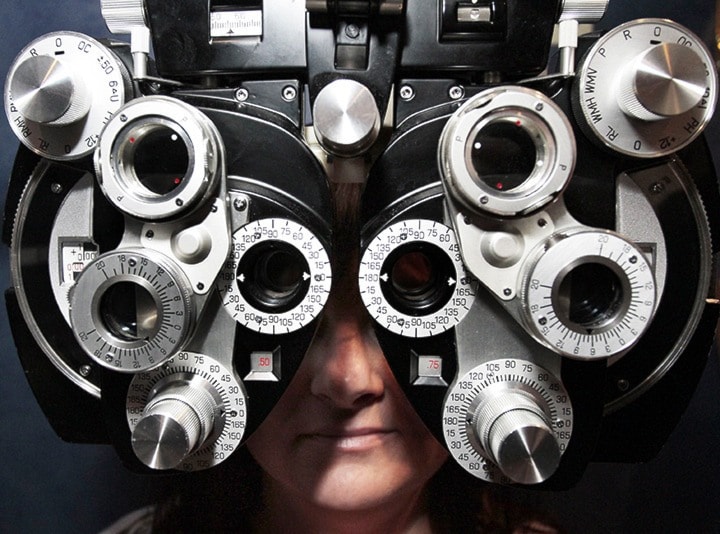Submitted
A new survey shows that digital eye strain is elevating to alarming rates in Alberta.
There’s no escaping them. Whether it’s working on a computer, sending a text message or watching TV, digital devices play a significant role in Albertans’ lives.
A new survey commissioned by the Alberta Association of Optometrists reveals that adults in Alberta spend an average of 10.5 hours per day on digital devices, and all of that screen time is causing digital eye strain.
Alberta optometrists are speaking out about this growing concern during Vision Health Month.
“We are definitely seeing an increase in the number of patients coming in with digital eye strain symptoms,” says Ponoka optometrist Dr. Marc Kallal. “In many cases, people are surprised to learn that it’s their smartphone, computer, TV or tablet that is causing the problem.”
The survey conducted at the end of April reveals that more than 70 per cent of adults in Alberta are experiencing discomfort as a result of using digital devices. This discomfort can range from tired eyes, to headaches, to blurred or double vision.
“When we stare at something close up, the eye muscles have to work much harder than when we look far away, which over time can cause the muscles in our eye to become tired and strained,” explained Kallal. “Also, when we stare at screens, we blink less. We typically blink 12 times a minute, but when looking at a screen, we tend to blink only five times a minute, which can lead to dry eyes.”
These factors coupled with the blue light emitted from digital devices can all result in people feeling the adverse effects of digital eye strain.
While there are quick and simple steps people can take to prevent digital eye strain, the survey data shows that many adults in Alberta aren’t protecting themselves as much as they could. Special lenses are available that can filter out the blue light emitted from screens.
Unfortunately, only 20 per cent of Albertans are aware that computer glasses are available, and only four per cent actually use blue-light blocking lenses. The 20-20-20 rule, which involves looking 20 feet away for 20 seconds every 20 minutes, can help relax the eyes, yet only 13 per cent of Albertans use it. Even something simple like properly positioning a computer screen can help protect the eyes, but the survey shows only 35 per cent of Albertans have their screen positioned slightly below eye level and at arm’s reach.
Some people may not realize that the symptoms they are experiencing are being caused by their digital device use. That’s why it’s important to visit a doctor of optometry on a regular basis. During a comprehensive eye exam, optometrists can determine if the adverse symptoms patients are experiencing are a result of digital eye strain or are an indicator of a larger problem. They also provide customized treatment options for patients to help eliminate or minimize symptoms.
The Alberta Association of Optometrists recommends children have their first eye exam between six and nine months, another between the ages of two and five and every year after that. Healthy adults should see an optometrist at least every two years, and seniors should have annual eye exams. In Alberta, annual eye exams are covered for children up to age 18 and seniors 65 and older. Visits to an optometrist for eye-related emergencies or treatments are covered for all Albertans.
“While there’s no avoiding digital devices, it’s important to remember that digital eye strain can be prevented,” said Kallal. “By educating themselves about digital eye strain, Albertans can save themselves a lot of discomfort and pain.”
For more information and to find an optometrist near you, visit www.optometrists.ab.ca.
Survey methodology: An online omnibus survey was conducted between April 20-21, 2017. Eight hundred and four Albertans aged 18 and over were surveyed. The estimated margin of error for the total sample is +/- 3.5 per cent.
